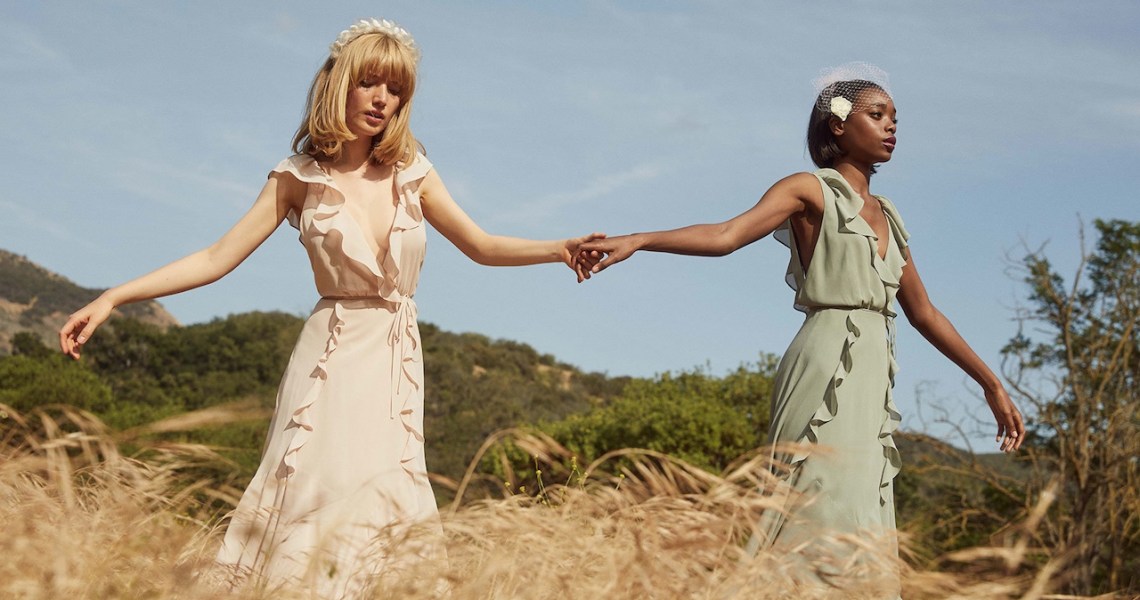Amid their statements of support for Black Lives Matter, brands’ mistreatment of their Black employees is coming to the surface thanks to vocal employees. And since most of fashion and retail is not unionized, employees are banding together in informal collective groups to make their voices even stronger.
A good example is the loose group of Twitter accounts for Black employees at various fashion media outlets. @R29Stories for Refinery29, @BlackAtBustle for Bustle Media and @BlackAtConde for Conde Nast have all provided places for employees to anonymously air their grievances to the world. As of the writing of this story, @BlackAtConde has been deleted, and @BlackAtBustle is restricted, flagged for unusual activity. @BlackAtBustle did not respond to a direct-messaged request for comment.
These accounts usually either repost testimonies that other employees have made on social media or post anonymous accounts collected from employees who don’t want their names attached to their story.
Outside of media, similar communities have popped up at fashion brands. Employees at lifestyle brand Ban.do created an Instagram account called @bando_anonymous to share anonymous stories about the racist culture at the company. For example, one post claims that a sales rep mocked the phrase “Black Lives Matter.”
These communities, which all formed after the protests began, have already forced changes. Refinery29’s editor-in-chief Christine Barberich resigned last week after multiple reports of mistreatment of black employees at the company, and Ban.do’s CEO Jen Gotch resigned as well.
The persons behind @R29Stories declined an interview, saying that they’d prefer the focus remain on the women who are sharing their stories.
Often, these unofficial groups are motivated by Black employees getting little recognition or aid when going through official channels at work. “I felt like I had no way to go through any of the official channels,” said Desirée Celestin, a former intern for Zimmermann, who spoke up about her experience with racism within the company last week. After leaving Zimmermann, Celestin went on to found her own fashion brand called Le Placard Desire.
These unofficial acts of solidarity can act as a stepping stone to more official forms of collective action, said Stuart Appelbaum, president of the Retail, Wholesale and Department Store Union which represents more than 60,000 workers at stores like Macy’s.
“People are talking among themselves more,” Appelbaum said. “They’re reaching out to each other, discussing working conditions openly and realizing that they have more power with a collective voice; they have more of an ability to protect themselves when they work together.”
Appelbaum said that in addition to the surge of support for anti-racism efforts, retailers’ responses to the coronavirus pandemic have also galvanized workers to fight for better conditions. Last week, the RWDSU organized a public event to offer free temperature checks for employees at Macy’s stores in New York after the company refused to make temperature checks free and mandatory for returning employees.
Fashion is not a heavily unionized industry, with few examples especially among trendy DTC brands. The largest union that represents fashion workers is Unite Here, which has 300,000 members, though only some of them work in fashion and the rest in other industries like hotels and casinos.
A nascent union effort at Everlane that started late last year was dealt a severe blow when a number of employees driving the effort were abruptly fired, a move which those employees claimed was an act of union-busting. Media is slightly more unionized, with Refinery29 having an editorial union that has strongly backed the employees who have spoken out about racism at the company. There are unions at a number of Conde Nast publications as well, most of which are organized under the Writers Guild of America, East.
According to Appelbaum, the unrest in America right now, both race-related and pandemic-related, has led to an increase in union interest from fashion workers.
“I can’t give you an exact number, but we hear from more people than we ever have before, wanting to find out how to form a union, how to join a union,” Appelbaum said. “People who might have been hesitant to reach out in the past are now much more open to the idea. People understand the risks. They’re no longer willing to just trust that their employer will protect them and look out for them. Everyone I talk to in labor has been saying that union curiosity has grown a lot since the pandemic began.”
“Companies making statements and donating to the NAACP is great, but what needs to happen is genuine restructuring,” Celestin said.




